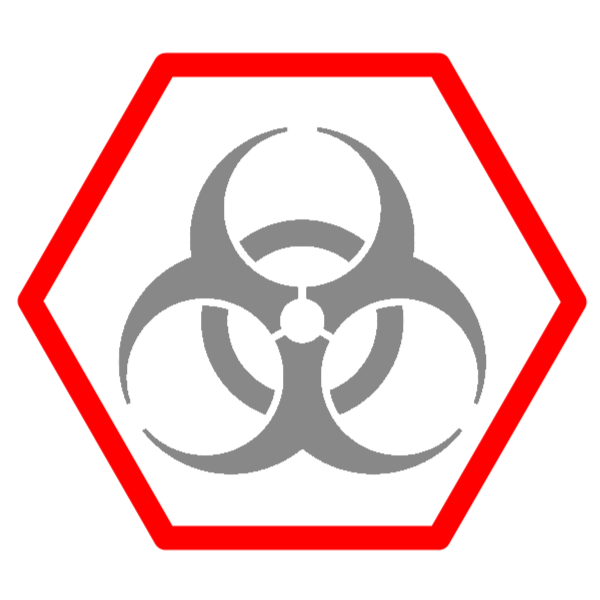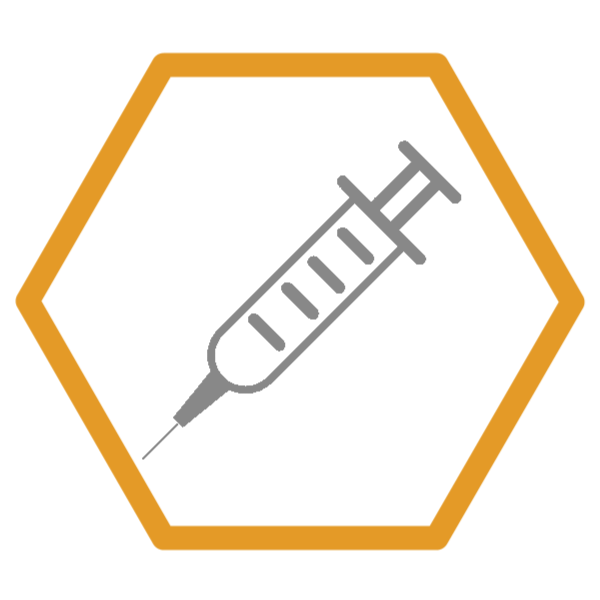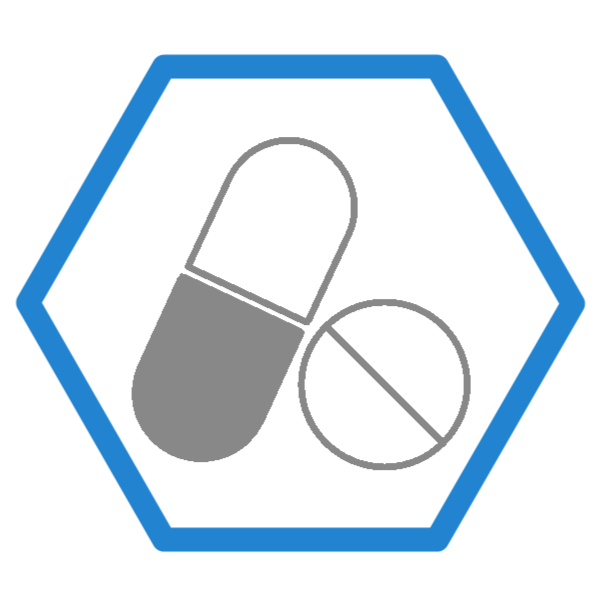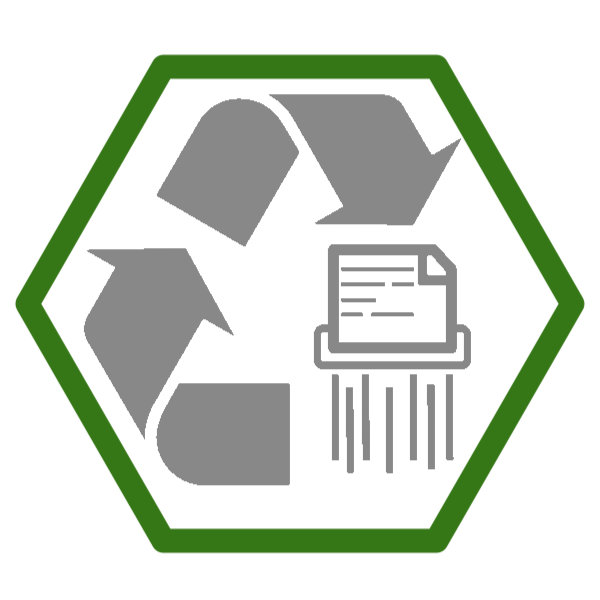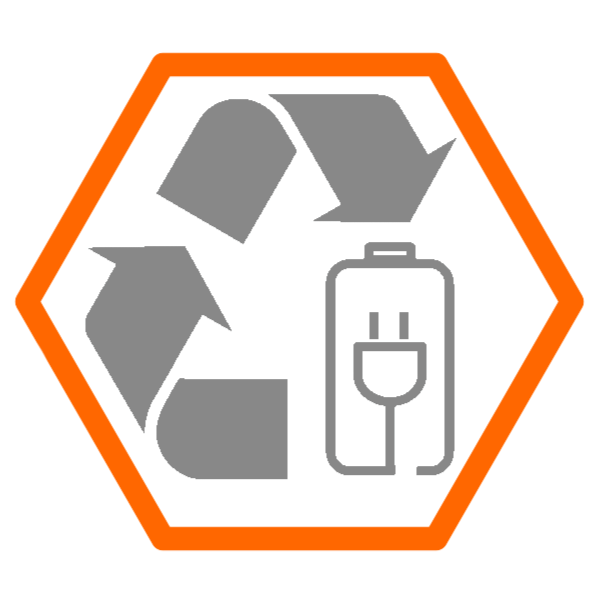Guide to Pennsylvania Medical Waste Rules and Regulations

Infectious waste is municipal and residual waste which is generated in the diagnosis, treatment, immunization or autopsy of human beings or animals, in research pertaining thereto, in the preparation of human or animal remains for interment or cremation, or in the production or testing of biologicals, and which falls under one or more of the following categories:
-
Cultures and stocks of infectious agents and associated biologicals, including the following: cultures from medical and pathological laboratories; cultures and stocks of infectious agents from research and industrial laboratories; wastes from the production of biologicals; discarded live and attenuated vaccines except for residue in emptied containers; and culture dishes, assemblies and devices used to conduct diagnostic tests or to transfer, inoculate and mix cultures.
-
Pathological wastes. Human pathological wastes, including tissues, organs and body parts and body fluids that are removed during surgery, autopsy, other medical procedures or laboratory procedures. The term does not include hair, nails or extracted teeth.
-
Human blood and body fluid waste. Liquid waste human blood. Blood products.
Items saturated or dripping with human blood.
Items that were saturated or dripping with human blood that are now caked with dried human blood, including serum, plasma and other blood components, which were used or intended for use in patient care, specimen testing or the development of pharmaceuticals.
Intravenous bags that have been used for blood transfusions.
Items, including dialysate, that have been in contact with the blood of patients undergoing hemodialysis at hospitals or independent treatment centers.
Items saturated or dripping with body fluids or caked with dried body fluids from persons during surgery, autopsy, other medical procedures or laboratory procedures.
Specimens of blood products or body fluids, and their containers. -
Animal wastes. Contaminated animal carcasses, body parts, blood, blood products, secretions, excretions and bedding of animals that were known to have been exposed to zoonotic infectious agents or nonzoonotic human pathogens during research (including research in veterinary schools and hospitals), production of biologicals or testing of pharmaceuticals.
-
Isolation wastes. Biological wastes and waste contaminated with blood, excretion, exudates or secretions from:Humans who are isolated to protect others from highly virulent diseases.
Isolated animals known or suspected to be infected with highly virulent diseases. -
Used sharps. Sharps that have been in contact with infectious agents or that have been used in animal or human patient care or treatment, at medical, research or industrial laboratories.
Exceptions to the definition of infectious waste includes:
-
Wastes generated as a result of home self-care.
-
Human corpses, remains and anatomical parts that are intended for interment or cremation, or are donated and used for scientific or medical education, research or treatment.
-
Etiologic agents being transported for purposes other than waste processing or disposal pursuant to the requirements of the United States Department of Transportation, the Pa. Department of Transportation and other applicable shipping requirements.
-
Samples of infectious waste transported offsite by Commonwealth or United States government enforcement personnel during an enforcement proceeding.
-
Body fluids or biologicals which are being transported to or stored at a laboratory prior to laboratory testing.
-
Ash residue from the incineration of materials if the incineration was conducted in accordance with infectious waste monitoring requirements. The ash residue shall be managed as special handling municipal waste.
-
Reusable or recyclable containers or other nondisposable materials, if they are cleaned and disinfected, or if there has been no direct contact between the surface of the container and materials. Laundry or medical equipment shall be cleaned and disinfected in accordance with the U.S. Occupational Safety and Health Administration Requirements relating to bloodborne pathogens.
-
Soiled diapers.
-
Mixtures of hazardous waste and other materials identified in the regulations shall be managed as hazardous waste and not infectious waste.
-
Mixtures of materials identified in the regulations and regulated radioactive waste shall be managed as radioactive waste in accordance with applicable Commonwealth and Federal statutes and regulations.
-
Mixtures of materials identified in the regulations and chemotherapeutic waste shall be managed as chemotherapeutic waste.
Managing Infectious Waste
The Pennsylvania Department of Environmental Protection (DEP) has comprehensive rules for the management of infectious waste. The rules include requirements for storage, transport, disposal, licensing and processing.
Basic Storage Requirements
Infectious and chemotherapeutic waste shall be stored and contained in a manner that:
-
Maintains the integrity of the containers, prevents the leakage or release of waste from the containers and provides protection from water, rain and wind;
-
Prevents the spread of infectious or chemotherapeutic agents;
-
Affords protection from animals and does not provide a breeding place or a food source for insects or rodents;
-
Maintains the waste in a nonputrescent state;
-
Prevents odors from emanating from the container; and
-
Prevents unauthorized access to the waste. As part of this requirement, the following shall be met:
Enclosures and containers used for storage of infectious or chemotherapeutic waste shall be secured to deny access to unauthorized persons. Enclosures and containers shall also be marked with prominent warning signs indicating the storage of infectious or chemotherapeutic waste.
Enclosures at a waste generating or processing facility that are used for the storage of infectious or chemotherapeutic waste shall be constructed of finish materials that are impermeable and capable of being readily maintained in a sanitary condition. Storage areas shall be ventilated to minimize human exposure to the exhaust air.
Infectious and chemotherapeutic waste may not be commingled with other waste.
The generator may store infectious and municipal waste that has been sorted and separately containerized on the same cart for movement to an onsite processing or disposal facility.
Chemotherapeutic waste may also be stored on the cart with municipal and infectious waste if it is sorted and
Sorting
Infectious and chemotherapeutic waste shall be placed in separate containers from other waste at the point of origin in the generating facility. Infectious and chemotherapeutic waste may be stored together in the same container if approved in writing by the Department.
Used sharps, regardless of whether they are infectious or chemotherapeutic waste, may be stored in the same container
Infectious waste shall be sorted at the point of origin in the generating facility into the following three classes, and each class shall be placed in a separate container:
-
Used sharps;
-
Fluid quantities greater than 20 cubic centimeters; and
-
Other infectious waste.
Chemotherapeutic waste shall also be sorted at the point of origin in the generating facility into the same classes. However, fluids must be separated regardless of the volume.
Sorted and separately containerized infectious waste may be placed together into another container for onsite handling or offsite transportation.
Storage for Infectious Waste for Generators
Generators of infectious or chemotherapeutic waste may store the waste onsite according to the following requirements:
-
Infectious waste, excluding used sharps, may be stored at room temperature until the storage container is full, but for no longer than 30 days from the date waste was first placed in the container. If the infectious waste becomes putrescent during the storage period, the waste shall be moved offsite within 24 hours for processing or disposal.
-
A storage container filled with infectious waste may be stored in a refrigeration unit for up to 30 days from the date waste was first placed in the container.
-
A storage container of infectious waste that has been filled within 30 days from the date waste was first placed in the container may be frozen immediately for up to 90 days from the date waste was first placed in the container.
Used sharps containers may be used until full as long as the storage is in accordance with basic storage requirements.
Storage for Infectious Waste Processors
If the waste processing facility is separate from the waste generating facility, infectious waste may not be stored at the waste processing facility for more than the following periods unless other periods are approved in a permit:
-
Seventy-two hours at a temperature ‹=28°C;
-
Seven days in a refrigerator at ‹=7°C; or
-
Thirty days in a freezer at ‹=-18°C.
Storage Containers
Infectious and chemotherapeutic waste shall be placed in containers that are leak proof; impervious to moisture; and sufficient in strength to prevent puncturing, tearing or bursting during storage.
-
In addition to the above requirements, used sharps shall be stored in containers that are rigid; tightly lidded; and puncture resistant.
-
In addition, infectious waste fluids in quantities greater than 20 cubic centimeters, and chemotherapeutic waste fluids shall be stored in containers that are break-resistant; and tightly lidded or tightly stoppered.
When bags are used as the only storage container, double or multiple bagging shall be used and the following requirements shall be met:
-
Upon packaging, bags shall be securely tied.
-
The bag shall be constructed of material of sufficient single thickness strength to meet DEP requirements and ASTM Standards. The bags shall be certified.
Marking of Containers
The outermost container for each package of infectious or chemotherapeutic waste for offsite transportation shall be labeled immediately after packing. The label shall be securely attached and be clearly legible. Indelible ink shall be used to complete the information on the label. If handwritten, the label shall be at least 3 inches by 5 inches in dimension. The following information shall be included on the label:
-
Name, address and telephone number of the generator;
-
Date the waste was generated; and
-
The name of the transporter and, if applicable, Department-issued infectious and chemotherapeutic waste transporter license number.
The following information shall be printed on the outermost container or bag for each package of infectious or chemotherapeutic waste for either onsite movement or offsite transportation:
-
The words “infectious waste’’ or “chemotherapeutic waste,’’ whichever is applicable; and
-
The universal biohazard symbol.
A container used for infectious waste cannot be used again unless it has been decontaminated, or the container surface has been protection from direct contact with the waste.
Transportation
Only DEP-licensed transporters may transport infectious and chemotherapeutic waste. Transporters must follow strict requirements in regard to containment and packaging, in order to maintain the integrity of the containers and to prevent leakages, spills and releases of the waste. Transporters must also comply with annual reporting requirements.
Permit-by Rule—On-Site Processing Facilities
A majority of infectious and chemotherapeutic waste on-site processing facilities may receive a permit-by-rule, if they meet the following conditions:
-
The facility complies with all applicable municipal waste storage, collection and transportation requirements;
-
The facility has all required and necessary permits;
-
The facility operator maintains all required plans, records, disposal and other DEP-required information in a readily accessible location;
-
Waste processing does not adversely affect the public health, safety, welfare or the environment;
-
Waste is properly disinfected; and
-
A log with required information is kept for each disinfection unit.
DEP - Infectious and Chemotherapeutic Waste

Price Lock Guarantee
We understand the importance of predictability when it comes to your finances. That is why we offer a price lock guarantee for our services. No increases for the duration of your service agreement.
No Hidden Fees
We understand the importance of transparency and strive to provide our customers with a clear and hassle-free experience. All fees are clearly stated upfront so that their are no surprises.
Low Disposal Cost
By streamlining our processes, leveraging advanced routing and disposal technologies, we have successfully reduced the costs associated with disposal. You can confidently choose our services.
Locally Owned
When you choose to support our locally owned business, you can trust that you are making a positive impact on your community, as your patronage directly supports local jobs, services, and initiatives.
Veteran Owned
We are honored to be a veteran-owned business, founded and operated by individuals who have proudly served in the military. Our commitment to excellence, integrity, and service is deeply rooted in our military experience.
Total Compliance
By emphasizing total compliance, we aim to build trust with our stakeholders, protect our reputation, and contribute to a fair and sustainable business environment.
Why San Diego Medical Waste Is The Clear Choice!
Step 1

-
Prior to use, line the regulated medical waste (RMW) container with an approved ASTM-rated red bag liner.
-
Label each RED bag that lines the container with your facility's name, address, and phone number.
-
Begin to fill the container with Sharps containers and Biohazard Bags.
PRO TIP: Do not overfill the container so that the lid will still fit.
Prepare the Container
Step 2

-
Place secured sharps containers and tied red bag medical waste into the lined regulated medical waste (RMW) transport container in an upright position. Ensure that no needles spill out during this process.
-
NO Loose Sharps can be placed into this container.
-
NO PHARMACEUTICALS can be placed into this container.
-
PRO TIP: Both sharps containers and biohazard bags are commingled into Regulated Medical Waste (RMW) containers for disposal.
Fill the Container
Step 3

-
On or before your scheduled service, Bring the tops of the bag together without touching the contents. Twist the top of the bag to form a rope.
-
Seal the Bag: Use one of two methods:
-
Overhand Knot: Make a loop with the rope and pull the end through the hole, tightening both ends.
-
Gooseneck Method: Fold the rope end over itself and seal it with plastic zip ties or duct tape.
-
Secure the RED Waste Bag
Step 4

-
Seal the container by placing the lid firmly on the top.
-
On your scheduled service day, we will perform a one for one exchange of your onsite regulated medical waste (RMW) container and deliver any pre ordered products (sharps containers, biohazard bags, etc).
-
Any waste that does not make it into the medical waste container prior to our arrival may be placed into the new container for pickup on your next scheduled service day.

